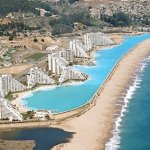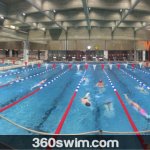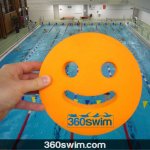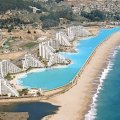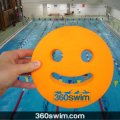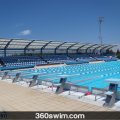A SWIMMER'S GUIDE TO POOL CHEMICALS (FAR BEYOND CHLORINE)
Ever wondered what chemicals are keeping the pool water you swim in so crystal clear? The art of pool chemistry is what allows hundreds of people to swim safely every day without the water turning into an algae-infested puddle.
This guide, with insights from the experts at Crystal Clear Pools & Spas, will break down the five main types of chemicals used to keep a pool clean, balanced, and safe for everyone to enjoy.
Dive Into: A Guide to Pool Chemicals
- The Main Sanitizer: Chlorine
- The Chlorine Stabilizer: Cyanuric Acid (CYA)
- A Note on Saltwater Pools
- Algae Control: Algaecides
- Water Balance Part 1: pH Control
- Water Balance Part 2: Calcium Hardness
- Water Clarity: Particle Removers
- But Is It All Safe to Swim In?
- Frequently Asked Questions
The Main Sanitizer: Chlorine
The sanitizer is the most critical component in making swimming pool water safe. The most common type is chlorine, which is used to kill germs, bacteria, and other harmful microorganisms in the water.
There are other types of sanitizers, such as bromine or ozone, but chlorine is by far the most popular.
Safety Tip: Never mix different types of chlorine or any other chemicals. Always add chemicals to water, not the other way around.
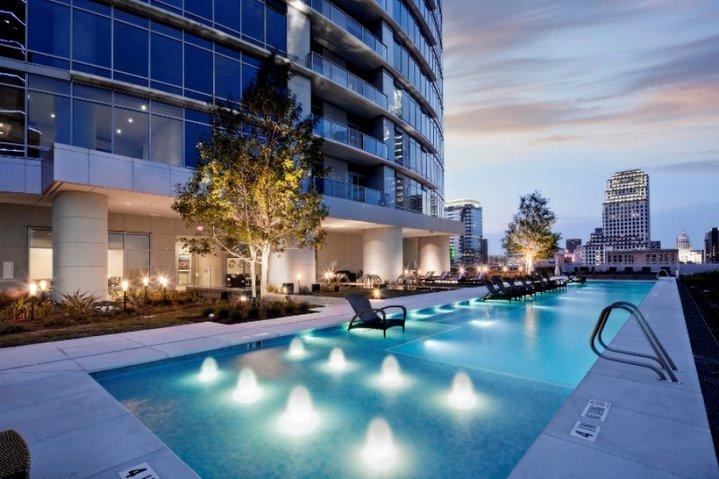
The Chlorine Stabilizer: Cyanuric Acid (CYA)
For any outdoor pool, another chemical is just as critical as chlorine: Cyanuric Acid (CYA), also known as stabilizer or conditioner.
Think of CYA as sunscreen for your chlorine. Without it, the sun's powerful UV rays can destroy over 90% of the chlorine in a pool in just a few hours. CYA protects the chlorine, allowing it to last much longer and keep the water sanitized.
However, the balance is delicate. Too much CYA can "bind" to the chlorine and make it slow to react, reducing its effectiveness at killing germs even if test kits show high chlorine levels.
A Note on Saltwater Pools
You've probably seen or swum in a "saltwater pool" at a hotel or health club. It's important to understand what this really means.
A saltwater pool is not a chlorine-free pool. It is a chlorine pool that uses a special piece of equipment called a Salt Water Generator (SWG) or salt cell. This device uses electrolysis to convert dissolved salt (sodium chloride) into chlorine gas, which then sanitizes the water.
The water in a saltwater pool often feels softer and less harsh on the skin and eyes. This is because the chlorine is produced continuously in a controlled way, which avoids the harsh "peaks and valleys" that can occur when chlorine is added manually.
Algae Control: Algaecides
An algaecide is a pool chemical that kills any existing algae in the pool. An algaestat, on the other hand, is used to make the conditions unfavorable for new algae to grow. Both are essential for preventing a green and murky pool.
Water Balance Part 1: pH Control
Pool pH levels should be kept in a narrow range, between 7.2 and 7.8. This is crucial because if the pH is too high or too low, the chlorine sanitizer becomes much less effective.
- If the pH is too low (too acidic), pool staff will use soda ash or simple baking soda to raise it.
- If the pH is too high (too alkaline), muriatic acid or sodium bisulfate is used to lower it.
Water Balance Part 2: Calcium Hardness
The level of calcium in the water, known as "calcium hardness," can have major effects on pool equipment like ladders, drains, and gutters. To protect the pool infrastructure, calcium hardness levels should be kept between 250 and 400 ppm.
Water Clarity: Particle Removers
Even with perfect sanitation and pH balance, water can become cloudy due to tiny particles suspended in it. Water clarifiers and flocculants are chemicals that cause these small particles to clump together into larger ones.
These larger clumps can then either be filtered out by the pool's system or will sink to the bottom, where they can be easily vacuumed up, keeping the pool sparkling clean.
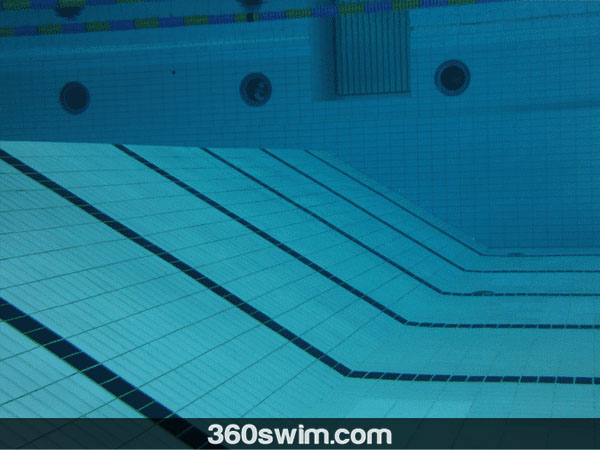
But Is It All Safe to Swim In?
All this talk of chemicals can be a bit overwhelming, but you can rest assured that a properly maintained pool is perfectly safe.
In most countries, public swimming pools are subject to random health inspector checks and must adhere to strict safety standards. If you are ever unsure, don't be afraid to ask the lifeguard about their chemical procedures.
If you have your own pool and want to become an expert, you can get certified through courses like the Certified Pool Operator (CPO) program.
This guide was written in collaboration with Scott H. and the staff of Crystal Clear Pools & Spas in Austin, Texas.
Frequently Asked Questions
Why do swimming pools need so many chemicals?
Chemicals are essential to keep pool water safe, clean, and clear. They kill harmful bacteria, prevent algae growth, balance the water's pH, and help remove tiny particles, ensuring the pool doesn't become a murky, unhealthy puddle.
What is the most important chemical in a swimming pool?
The sanitizer, most commonly chlorine, is the most important chemical. Its job is to kill germs, viruses, and bacteria, making the water safe for swimmers.
What does pH control do for a pool?
Maintaining the correct pH level (between 7.2 and 7.8) is crucial for both comfort and safety. If the pH is off, the chlorine becomes less effective, and the water can irritate your skin and eyes.
Why is my pool green or cloudy?
A green pool is caused by algae. Algaecides are used to kill existing algae, while algaestats prevent it from growing. Cloudy water is caused by tiny particles, which are removed by clarifiers or flocculants.
Are the chemicals in a public swimming pool safe?
Yes, a properly maintained pool is perfectly safe. Public pools are required to adhere to strict health and safety standards and are regularly inspected to ensure chemical levels are correct.
 LNURL1DP68GURN8GHJ7URP0YHRXD3SWDMKJMFWVDHK6TMVDE6HYMRS9A4HSCNCWFXSH3NN0H
LNURL1DP68GURN8GHJ7URP0YHRXD3SWDMKJMFWVDHK6TMVDE6HYMRS9A4HSCNCWFXSH3NN0H

